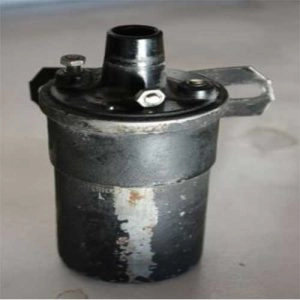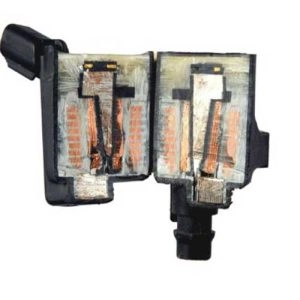Most of us know that cars operate thanks to the energy produced by fuel combustion, but many people may not know how fuel burns, or what part of the car helps in its combustion, which we will highlight in this article, and that is the coil.
What is the coil?

A coil, sometimes referred to as a spark generator, is a part related to the ignition in a car. Its importance lies in its role in increasing the car battery's voltage from 12 volts to a much higher value, sufficient to create an electric spark in the car's spark plugs to burn fuel and operate the engine. The operation of the coil relies on electromagnetic induction, which uses an appropriate magnetic field to generate electric current. This process creates an electric voltage of about 20,000 volts in order to create a single electric spark.
What does the coil consist of? And where is it located?

Modern coils basically consist of an iron core, along with the primary and secondary coil windings, all assembled within a plastic housing, then filled with an insulating material. As for their location, most modern cars have a single coil for each cylinder, with each coil mounted directly above the spark plug, unlike older cars which used a single coil for all the cylinders, relying on a distributor, and a set of wires to transfer the electric spark to all the spark plugs.
Symptoms of Coil Damage

"How do you know if a coil is damaged?" This is a question posed by many people. Now, after we have clarified the role and importance of the coil, it is time to answer this question. In this section, we will explain the top 5 symptoms indicating coil damage and the need for its replacement. These symptoms are:
Increased fuel consumption
If you feel that your car is consuming more fuel than usual, you should check the condition of your spark plug, as this excess consumption is an indicator of damage to the spark plug. The reason for this excess consumption is that part of the fuel is not burning, or it is burning improperly, and the energy from its combustion is not being utilized to power the car. This forces the car's computer to consume more fuel to compensate for the lack of power, in order to maintain the same level of performance that the driver needs while driving.
Also read: Manual Transmission 5 Signs indicates its damage
Appearance of the engine light
If a fault occurs in one of the coils in the car, it may trigger the engine light on the car's dashboard. Therefore, it is recommended to promptly check the car with the OBD2 scanner specifically designed to read fault codes, especially as inspecting the car's computer is one of the easiest ways to ensure the coils are functioning properly. When the car is examined through the computer, the symbol P035X will appear if there is a fault in one of the coils, as this code indicates that cylinder number X is not operating with the ignition coil as it should.
Black smoke coming out
Weak and damaged coils can hinder the generation of the necessary electric spark for fuel combustion in the spark plugs, leading to incomplete fuel combustion. This results in unburnt fuel being expelled from the exhaust pipe as black smoke. Therefore, if you notice this black smoke coming out of your car's exhaust pipe, do not ignore it, as it could lead to engine deterioration in the future.
Coil head corrosion
There are two possible reasons for the erosion of the spark plug head. The first one is that it is not functioning properly, leading to a significant increase in its temperature to the point of corroding the ignition coil head cover, causing it to burn. The second reason is a defect in the spark plugs, which causes the coil to work harder, thus increasing its temperature and causing corrosion.
Weakness in the car's performance
In fact, damage to the coil will significantly affect your car's operation, and you will notice considerable changes in its performance. The most prominent issues you may encounter include intense vibration, frequent engine cut-offs while at a stop, as well as reduced torque and acceleration due to a decrease in power generated while driving. In advanced stages, you may find it difficult to start the engine.
What is the lifespan of a coil?
Also, this question has attracted some people's attention, knowing that the coil can function for more than 160,000 kilometers without the need for a change. In fact, it is not necessary to change the coil before it gets damaged and one of the symptoms that we explained to you in the previous paragraph appears. And if you inspected the car's computer and found that one of the coils is broken, you don't need to replace them all, just change the damaged one.
Reasons for Ignition Coil Failure
When the high voltage of the spark generator fails to flow smoothly, this can cause issues within it. Its temperature will rise rapidly, accelerating the erosion of its insulating materials. When the insulation layer deteriorates, it leads to the ignition coil head burning out, subsequently failing to transmit electricity to the spark plugs. In addition to that, there are other key factors beyond the erosion of the insulating materials that can cause overheating.The CoilOne of the most notable examples is the presence of a fault in the car's computer, which leads to the transmission of incorrect signals to the signal generator.

Comments